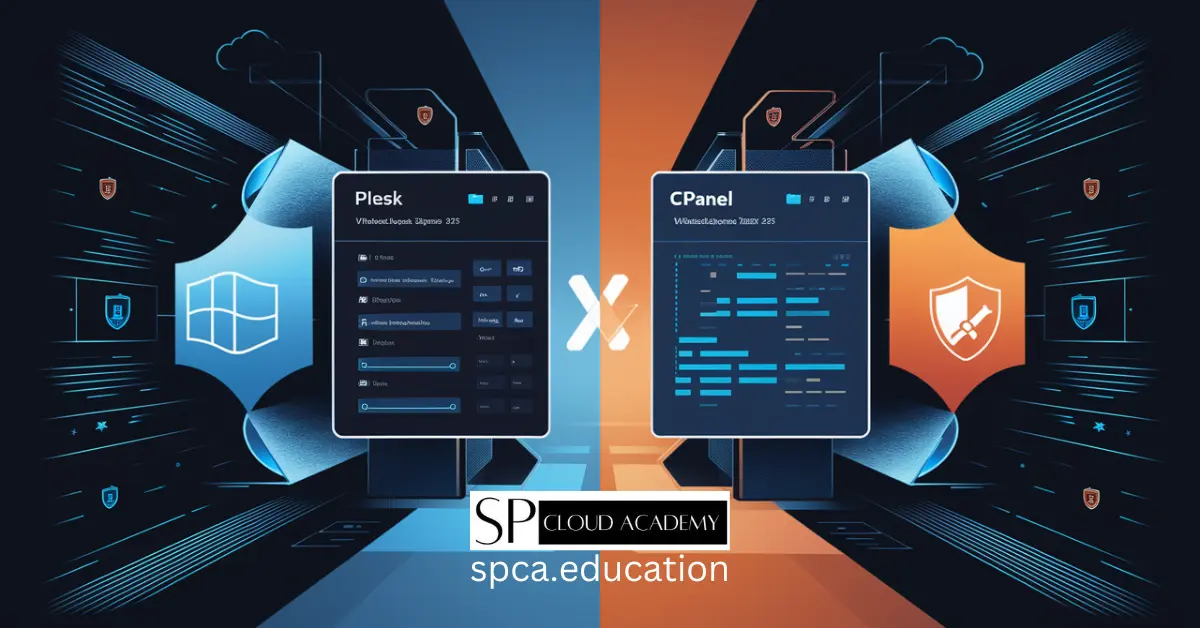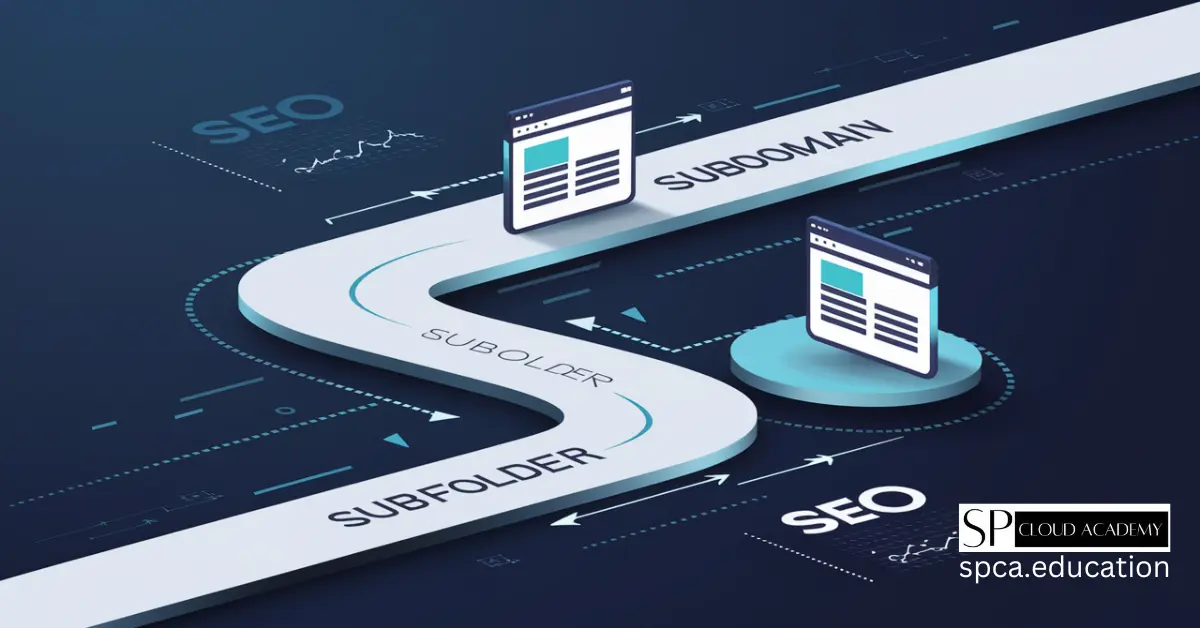A web development career is a profession that involves the design, development, and maintenance of websites and web applications. Web developers use a variety of programming languages and software tools to create websites that are both functional and visually appealing.
A career in web development can be both rewarding and fulfilling. Web developers are professionals who design, create, and maintain websites and web applications. They play a crucial role in the digital world, as websites are essential for businesses, organizations, and individuals to establish an online presence and engage with their audience.
Here are some key points to consider if you’re interested in pursuing a career in web development:
- Skills and Knowledge: Web development involves a combination of technical skills, programming languages, and knowledge of web technologies. You’ll need to learn HTML, CSS, and JavaScript as foundational languages. Additionally, knowledge of backend technologies like PHP, Python, Ruby, or Node.js, and familiarity with databases like MySQL or MongoDB will be valuable.
- Front-end vs. Back-end vs. Full-stack: Web development can be divided into front-end, back-end, and full-stack development. Front-end developers focus on the user interface and user experience, back-end developers work on server-side logic and databases, while full-stack developers are proficient in both front-end and back-end technologies.
- Frameworks and Libraries: Learning popular frameworks and libraries like React, Angular, Vue.js (for front-end) and Express.js, Django, or Ruby on Rails (for back-end) can help streamline your development process and make you more marketable to employers.
- Continuous Learning: Web development is a fast-paced field with ever-evolving technologies. Continuous learning is crucial to stay up-to-date with the latest trends and best practices.
- Portfolio: Building a portfolio of your web development projects is essential to showcase your skills and experience to potential employers or clients. Having real-world projects demonstrates your capabilities and dedication.
- Freelancing vs. Employment: You can choose to work as a freelancer, providing web development services to clients, or seek employment in web development agencies, startups, or established companies.
- Soft Skills: Apart from technical skills, communication, problem-solving, teamwork, and time management skills are important in any professional environment, including web development.
- Networking: Participate in web development communities, attend meetups, and connect with other professionals in the field. Networking can lead to job opportunities and collaborations.
- Job Market: Web development skills are in high demand in various industries. Companies of all sizes need websites and web applications, providing a diverse range of job opportunities.
- Passion and Creativity: Web development allows you to express your creativity and build innovative solutions. A passion for coding and problem-solving will keep you motivated and help you overcome challenges.
Remember that web development is a field that requires continuous learning and adaptability due to the rapidly changing technology landscape. However, with dedication, hard work, and a solid foundation of skills, you can forge a successful and fulfilling career in web development.
Web Development Fields
Web development is a diverse field with various specialized areas or “fields,” each focusing on different aspects of website and web application creation. Below are some common web development fields:
- Front-end Development: Front-end developers are responsible for the visual and interactive aspects of websites and web applications. They work with technologies like HTML, CSS, and JavaScript to design and implement user interfaces that users interact with directly.
- Back-end Development: Back-end developers work on the server-side of web applications. They handle server configuration, databases, and application logic, managing data processing and user interactions behind the scenes.
- Full-stack Development: Full-stack developers have expertise in both front-end and back-end development. They can handle the entire web development process, from designing the user interface to managing databases and server-side logic.
- UI/UX Design: UI (User Interface) and UX (User Experience) designers focus on creating visually appealing and user-friendly interfaces. They ensure that websites and applications are easy to navigate, intuitive, and provide a positive user experience.
- Responsive Web Design: Responsive web designers specialize in creating websites that adapt and function well across different devices and screen sizes, such as desktops, tablets, and smartphones.
- Web Accessibility: Web accessibility specialists ensure that websites and web applications are accessible to all users, including those with disabilities, by following accessibility guidelines and best practices.
- Web Security: Web security experts focus on identifying and mitigating security risks in web applications, protecting against data breaches, and implementing secure authentication and authorization mechanisms.
- E-commerce Development: E-commerce developers specialize in building online stores and marketplaces, integrating payment gateways, shopping carts, and inventory management systems.
- Content Management Systems (CMS): CMS developers work with platforms like WordPress, Joomla, or Drupal to create and customize websites that can be easily managed and updated by non-technical users.
- Web Performance Optimization: These specialists focus on optimizing the speed and performance of websites to ensure quick loading times and smooth user experiences.
- Web Analytics: Web analytics professionals use tools like Google Analytics to track and analyze user behavior on websites, providing valuable insights for optimization and marketing purposes.
- Web Testing and Quality Assurance: Testing professionals ensure that web applications are thoroughly tested for functionality, compatibility, and usability, identifying and resolving bugs and issues.
- Web App Security Penetration Testing: These specialists perform ethical hacking to identify vulnerabilities in web applications and help organizations improve their security measures.
- Web DevOps: Web DevOps professionals bridge the gap between development and operations, focusing on automating deployment, monitoring, and maintaining web applications efficiently.
These are just some of the many specialized fields within web development. Depending on their interests, skills, and career goals, web developers can choose to specialize in one or more of these areas to become experts in their chosen domain.
Web development and web design
Web development and web design are two distinct but interconnected aspects of creating websites and web applications. They involve different skill sets and responsibilities, but they work together to achieve a cohesive and visually appealing online presence. Here are the key differences between web development and web design:
Web Development:
- Focus: Web development primarily deals with the technical implementation and functionality of websites and web applications. It involves building the underlying structure, functionality, and logic that enables the website to function as intended.
- Skills: Web development requires proficiency in programming languages and technologies such as HTML, CSS, JavaScript, and various back-end languages (e.g., PHP, Python, Ruby, Java). Developers also work with databases, APIs, and server-side configurations.
- Responsibilities: Web developers handle the creation of dynamic and interactive elements on websites, including user authentication, form submissions, data processing, and communication with servers.
- Result: The end result of web development is a fully functional website or web application that users can interact with, but the design and user interface may not yet be visually polished.
- Examples: A web developer would work on tasks like creating interactive forms, integrating a database with a website, implementing e-commerce functionality, and building the back-end infrastructure of web applications.
Web Design:
- Focus: Web design concentrates on the visual aspects and user experience of a website or web application. It involves creating the layout, color schemes, typography, and other design elements to make the site aesthetically pleasing and user-friendly.
- Skills: Web designers should be skilled in graphic design, layout design, color theory, typography, and user experience (UX) principles. They often use design tools like Adobe Photoshop, Sketch, or Figma.
- Responsibilities: Web designers are responsible for creating wireframes, mockups, and prototypes that demonstrate the look and feel of the website or application. They ensure that the design aligns with the brand identity and the intended user experience.
- Result: The output of web design is a visually appealing and user-friendly design that specifies how the website will look, including the arrangement of elements, colors, fonts, and images.
- Examples: A web designer would work on tasks like creating the overall layout of a website, designing logos and icons, selecting color schemes, and optimizing the user interface for easy navigation.
Web development and web design are often collaborative efforts. Web designers create the visual blueprint, and web developers bring that design to life by coding and implementing the necessary functionalities. The two roles must work closely together to ensure the final product meets both aesthetic and functional requirements.
In summary, web development focuses on the technical implementation and functionality of websites and web applications, while web design focuses on the visual aspects and user experience. Both are essential components of building a successful website or web application.
Web development vs Software engineering
Web development and software engineering are both related fields, but they have some key differences.
- Web development is the process of creating websites and web applications. Web developers use a variety of programming languages and software tools to create websites that are both functional and visually appealing.
- Software engineering is the broader field of designing, developing, testing, and maintaining software. Software engineers use a variety of programming languages and software tools to create software that meets the needs of users.
Here is a table that summarizes the key differences between web development and software engineering:
| Feature | Web Development | Software Engineering |
| Focus | Creating websites and web applications | Designing, developing, testing, and maintaining software |
| Languages | HTML, CSS, JavaScript, PHP, Python, Ruby | Java, C++, C#, Python, JavaScript |
| Tools | Visual Studio Code, Atom, Sublime Text | Eclipse, IntelliJ IDEA, Visual Studio |
| Environment | Web browser, server, database | Operating system, hardware, network |
| Career paths | Front-end developer, back-end developer, full-stack developer | Software engineer, systems engineer, DevOps engineer |
Career Development
How to become a web developer
Becoming a web developer requires a combination of learning technical skills, building practical experience, and staying updated with industry trends. Here’s a step-by-step guide on how to become a web developer:
- Understand the Basics: Start by familiarizing yourself with the fundamentals of web development. Learn about HTML, CSS, and JavaScript, as they form the backbone of web development. There are plenty of online resources, tutorials, and courses available to get you started.
- Choose a Specialization: Web development offers various specializations, such as front-end development, back-end development, full-stack development, UI/UX design, and more. Explore different areas to find which one interests you the most.
- Learn Front-end Development: For front-end development, dive deeper into HTML, CSS, and JavaScript. Explore front-end frameworks like React, Angular, or Vue.js, which are widely used in modern web development.
- Learn Back-end Development: If you’re interested in back-end development, learn a back-end programming language like Python, PHP, Ruby, Node.js, or Java. Understand how to work with databases and server-side frameworks like Express.js or Django.
- Build Projects: Practice is essential in web development. Start building small projects to apply your knowledge and gain hands-on experience. These projects can be personal websites, simple web apps, or contributions to open-source projects.
- Build a Portfolio: Create a portfolio website to showcase your projects, skills, and experience. This portfolio will serve as your online resume and demonstrate your capabilities to potential employers or clients.
- Explore Web Development Tools: Familiarize yourself with various web development tools and software, such as code editors (e.g., Visual Studio Code, Sublime Text), version control systems (e.g., Git), and package managers (e.g., npm, yarn).
- Learn from Others: Engage with the web development community by joining online forums, attending meetups, and participating in coding events or hackathons. Learning from others and collaborating on projects can enhance your skills.
- Stay Updated: Web development technologies evolve rapidly. Stay updated with the latest trends, new frameworks, and best practices by reading blogs, watching online tutorials, and following industry experts.
- Consider Formal Education or Bootcamps: While not mandatory, formal education or coding bootcamps can provide structured learning and accelerate your progress. Look for reputable coding bootcamps or online courses that offer comprehensive web development training.
- Apply for Internships or Junior Positions: Once you have some experience and a portfolio, apply for internships or junior web developer positions to gain real-world work experience and further refine your skills.
- Continuously Improve: Web development is an ongoing learning process. Continuously improve your skills, take on challenging projects, and be open to learning new technologies to advance your career.
Remember that becoming a web developer requires dedication, practice, and perseverance. Be patient with yourself, and don’t be afraid to experiment and make mistakes – learning from mistakes is a valuable part of the journey. With determination and consistent effort, you can successfully become a skilled web developer.
How to become a web designer
Becoming a web designer involves acquiring specific design skills, understanding user experience (UX) principles, and building a strong portfolio to showcase your work. Here’s a step-by-step guide on how to become a web designer:
- Learn Design Fundamentals: Start by learning the basics of design principles, such as color theory, typography, layout design, and composition. Understand how these elements work together to create visually appealing designs.
- Explore Web Design Tools: Familiarize yourself with design software like Adobe Photoshop, Adobe Illustrator, Sketch, or Figma. These tools are commonly used in web design to create graphics, layouts, and mockups.
- Understand User Experience (UX) Design: UX design is essential for creating user-friendly and intuitive websites. Learn about user research, information architecture, wireframing, and prototyping to optimize the user experience.
- Study Web Design Trends: Stay updated with the latest web design trends and best practices. Follow design blogs, attend web design conferences, and analyze well-designed websites for inspiration.
- Practice Designing Websites: Start designing your own projects or redesigning existing websites to apply your design skills. Focus on creating responsive designs that work well on different devices.
- Build a Design Portfolio: Create a portfolio website to showcase your web design projects. Include a variety of designs to demonstrate your versatility and proficiency in different styles and concepts.
- Seek Feedback and Critiques: Share your work with fellow designers or design communities to receive feedback and constructive critiques. This will help you improve your designs and gain insights from others.
- Collaborate with Developers: Work with web developers to understand the technical aspects of implementing your designs. Understanding how designs are translated into functional websites is crucial for effective collaboration.
- Learn about Web Development Basics: Although web designers focus on the visual aspect, having a basic understanding of HTML, CSS, and JavaScript can be beneficial for effective communication with developers.
- Expand Your Skillset: Consider learning additional skills like UI animation, interaction design, or motion graphics. These skills can add depth to your web design projects.
- Stay Open to Learning: The field of web design is continuously evolving. Stay open to learning new design techniques and tools as they emerge.
- Apply for Web Design Jobs or Freelance Projects: Start applying for web design jobs or seek freelance opportunities to gain real-world experience. Use your portfolio to showcase your skills and land design projects.
Remember that becoming a web designer is a creative journey, and it takes time and practice to refine your skills. Focus on building a strong portfolio and continuously improving your designs. Collaborating with others and seeking feedback can accelerate your growth as a web designer. Stay passionate about design and stay curious about emerging trends to succeed in this field.
How to become a Full-stack developer
Becoming a full-stack developer involves mastering both front-end and back-end development, which means gaining proficiency in a combination of programming languages, frameworks, and tools. Here’s a step-by-step guide on how to become a full-stack developer:
- Learn the Basics: Start by learning the fundamentals of web development, including HTML, CSS, and JavaScript. These languages form the foundation for both front-end and back-end development.
- Front-end Development: Focus on front-end development to build the user interface and user experience. Learn front-end frameworks like React, Angular, or Vue.js, and understand how to create responsive and interactive web pages.
- Back-end Development: Transition to back-end development and learn a back-end programming language like Python, Ruby, PHP, Node.js, or Java. Understand server-side logic and how to work with databases.
- Database Management: Learn how to work with databases like MySQL, PostgreSQL, MongoDB, or others. Understand concepts like database design, querying, and data manipulation.
- Server-Side Frameworks: Familiarize yourself with server-side frameworks like Express.js (Node.js), Django (Python), Ruby on Rails (Ruby), Laravel (PHP), or Spring Boot (Java). These frameworks streamline back-end development and make it easier to build web applications.
- Full-Stack Frameworks: Explore full-stack frameworks like MEAN (MongoDB, Express.js, Angular, Node.js) or MERN (MongoDB, Express.js, React, Node.js). These frameworks allow you to work with a consistent technology stack for both front-end and back-end development.
- Version Control: Learn how to use version control systems like Git. Version control is essential for collaborative development and managing code changes effectively.
- Practice Projects: Start building full-stack projects that integrate both front-end and back-end components. Practice is crucial for solidifying your knowledge and gaining hands-on experience.
- Build a Full-Stack Portfolio: Create a portfolio website showcasing your full-stack projects. Demonstrate your ability to work with different technologies and showcase your problem-solving skills.
- Explore DevOps and Deployment: Learn about DevOps practices and explore deployment options for web applications. Understand how to deploy your full-stack projects on web servers or cloud platforms.
- Continuous Learning: Full-stack development involves working with a wide range of technologies, and the field is constantly evolving. Stay updated with the latest trends, new frameworks, and best practices.
- Collaborate and Network: Collaborate with other developers and participate in open-source projects or coding communities. Networking with professionals in the field can lead to valuable opportunities and insights.
- Apply for Full-Stack Developer Jobs: Once you have gained sufficient knowledge and experience, start applying for full-stack developer roles. Tailor your resume and portfolio to highlight your full-stack expertise.
Remember that becoming a full-stack developer requires dedication and continuous learning. Take the time to practice and build real-world projects to demonstrate your skills and become proficient in both front-end and back-end development. As you gain experience, you will become a well-rounded full-stack developer capable of building end-to-end web applications.
Learning Platforms
There are numerous online learning platforms that offer a wide range of courses and resources for individuals looking to acquire new skills or enhance their knowledge. Here are some popular online learning platforms:
- Coursera: Coursera offers courses, specializations, and degree programs from top universities and institutions. It covers various subjects, including technology, business, arts, and more.
- Udemy: Udemy is a marketplace for on-demand courses, with a vast selection of topics taught by instructors from around the world. It includes both free and paid courses.
- LinkedIn Learning (formerly Lynda.com): LinkedIn Learning provides video courses taught by industry experts on business, technology, creative skills, and more. It is integrated with LinkedIn profiles.
- edX: edX offers free online courses from top universities like MIT, Harvard, and others. It covers various subjects, including computer science, engineering, humanities, and more.
- Pluralsight: Pluralsight focuses on technology-related courses, particularly in software development, IT, and data science. It offers skill assessments and learning paths.
- Codecademy: Codecademy specializes in coding and programming courses. It provides interactive lessons to learn programming languages like Python, JavaScript, HTML/CSS, and more.
- Treehouse: Treehouse offers web development and design courses, with a focus on building practical skills through hands-on projects.
- Skillshare: Skillshare features a diverse range of creative courses, including design, photography, illustration, and writing. It also covers business and technology topics.
- Khan Academy: Khan Academy offers free courses and educational resources covering a wide range of subjects, from math and science to arts and humanities.
- Udacity: Udacity focuses on technology-related courses, particularly in fields like artificial intelligence, data science, and machine learning. It offers nanodegree programs.
- SoloLearn: SoloLearn provides free mobile-based courses and coding challenges for learning programming languages on the go.
- FutureLearn: FutureLearn offers courses from universities and institutions worldwide, with a focus on a variety of subjects, including technology, health, business, and more.
These platforms offer courses for various skill levels, from beginners to advanced learners. They often provide certificates of completion that can be added to your resume or LinkedIn profile to showcase your new skills. Depending on your interests and learning style, you can choose from these platforms to start your learning journey.
Certifications
Web development certifications are credentials that demonstrate your proficiency and knowledge in various aspects of web development. These certifications are offered by reputable organizations and institutions and can be valuable for enhancing your resume, gaining recognition in the industry, and increasing your job prospects. Here are some popular web development certifications:
Google Developer Certifications:
- Google Mobile Web Specialist: This certification validates your skills in creating performant and responsive web applications.
- Google Associate Android Developer: While not strictly web development, this certification focuses on Android app development using web technologies. https://developers.google.com/certification
Microsoft Technology Associate (MTA):
- HTML5 Application Development Fundamentals: This certification covers HTML, CSS, and JavaScript essentials for web development. https://learn.microsoft.com/en-us/certifications/
AWS Certified Developer – Associate:
- This certification is for developers working with Amazon Web Services (AWS), which includes web developers using AWS for web application deployment. https://aws.amazon.com/certification/certified-developer-associate/
Zend Certified PHP Engineer (ZCE):
- This certification validates your PHP programming skills, which are essential for back-end web development. https://www.zend.com/training/php
Oracle Certified Professional (OCP) – Java SE 11 Developer:
- This certification focuses on Java programming, which is widely used for building web applications. https://education.oracle.com/oracle-certified-professional-java-se-11-developer/trackp_OCPJAV11
CIW Web Development Series:
- CIW provides a series of certifications related to web development, including HTML5 & CSS3, JavaScript, and Web Design Specialist. https://www.ciwcertified.com/ciw-certifications/web-development-series
W3Schools Certifications:
- W3Schools offers certifications for HTML, CSS, JavaScript, SQL, and other web development technologies. These are self-paced, online assessments. https://www.w3schools.com/html/html_exam.asp
The Odin Project:
- Though not a traditional certification, The Odin Project is a free, open-source curriculum for web development, and completing the full curriculum demonstrates your skills. https://www.theodinproject.com/
It’s important to note that while certifications can be valuable, they should not be the sole focus of your learning journey. Building real-world projects, contributing to open-source projects, and creating a strong portfolio are equally important in showcasing your web development skills to potential employers or clients.
Before pursuing a certification, research its relevance, industry recognition, and whether it aligns with your career goals. Keep in mind that web development is a rapidly evolving field, so staying up-to-date with the latest trends and technologies is crucial for success, regardless of certifications.
Internship and Freelancing/Remore Jobs
Internship
Finding web development internship opportunities can be a great way to gain real-world experience, build your portfolio, and network with professionals in the industry. Here are some strategies to find web development internships:
- University Career Centers: Check with your university or college’s career center for internship postings and career fairs. Many universities have connections with local companies that offer internships.
- Online Job Portals: Websites like Indeed, Glassdoor, LinkedIn, and Internshala often have listings for web development internships. Use relevant keywords such as “web development internship” or “front-end/back-end development internship” in your search.
- Company Websites: Visit the career or job sections of companies that interest you. Many companies post internship opportunities on their websites.
- Networking: Network with professionals in the web development field through LinkedIn, meetups, and industry events. Sometimes, internships are not publicly advertised but can be found through networking connections.
- Tech Startups and Small Businesses: Consider reaching out to local tech startups or small businesses that may be open to hiring interns. They might offer more hands-on experience and the opportunity to work closely with experienced developers.
- Internship Programs: Look for internship programs offered by tech companies or organizations that focus on web development. These programs often provide structured learning opportunities and mentorship.
- Freelancing Platforms: Explore freelancing platforms like Upwork or Freelancer. While not traditional internships, you can find short-term projects that can help you gain experience and build your portfolio.
- Non-Profit Organizations: Some non-profit organizations may require assistance with their websites or web applications. Volunteering your web development skills for a non-profit can be a valuable learning experience.
- Local Meetups and Hackathons: Attend local meetups or hackathons related to web development. These events provide opportunities to connect with potential employers and discover internship openings.
- Educational Platforms: Online learning platforms like Coursera, Udemy, and Udacity sometimes offer internship opportunities to their most active and successful learners.
When applying for internships, ensure your resume and portfolio highlight your web development skills, projects, and any relevant coursework or certifications. Tailor your applications to match the specific requirements and objectives of each internship opportunity. Remember to showcase your enthusiasm for learning and growing as a web developer.
Freelancing/Remore Jobs
Freelancing and remote jobs in web development have become increasingly popular, offering flexibility and opportunities to work with clients or companies from around the world. Here’s how you can find freelancing and remote job opportunities in web development:
1. Freelancing Platforms:
- Websites like Upwork, Freelancer, Toptal, and Fiverr are popular platforms for finding freelance web development projects. Create a compelling profile, showcase your skills, and bid on relevant projects.
2. Remote Job Boards:
- Websites like Remote OK, We Work Remotely, and Remote.co focus specifically on remote job opportunities. You can filter job listings by web development roles and technologies.
3. Company Career Pages:
- Many companies offer remote work options, and they list remote job opportunities on their career pages. Check the career pages of companies you’re interested in for remote web development positions.
4. LinkedIn:
- LinkedIn is a valuable tool for finding remote job opportunities. Set your preferences to show remote job listings and use relevant hashtags like #remotework, #webdevelopment, and #remotejobs in your searches.
5. Networking:
- Network with other web developers and professionals in the industry. Attend virtual meetups, webinars, and online conferences to connect with potential clients or employers.
6. Social Media:
- Follow web development job boards and remote work-focused accounts on social media platforms like Twitter, Facebook, and Reddit. They often share remote job opportunities.
7. Online Communities and Forums:
- Participate in web development forums like Stack Overflow, Reddit’s r/webdev, or Dev.to. These communities often have job boards or dedicated job threads where remote opportunities are posted.
8. Remote-first Companies:
- Look for companies that have a remote-first or remote-friendly work culture. These companies are more likely to offer remote web development positions.
9. Job Aggregators:
- Use job aggregator websites like Indeed or SimplyHired to search for remote web development jobs. You can use filters to refine your search for remote opportunities.
10. Start Freelancing Independently:
- If you have a strong portfolio and skills, consider reaching out to potential clients directly. Cold email or pitch your web development services to businesses that might need your expertise.
When applying for remote web development jobs or freelancing projects, ensure your resume, portfolio, and cover letter highlight your relevant skills and experience. Emphasize your ability to work independently, meet deadlines, and communicate effectively in a remote setting. Building a strong online presence and showcasing your past projects can significantly increase your chances of landing remote opportunities.
FAQs
Here are some frequently asked questions (FAQs) related to a career in web development:
1. What is web development?
Web development is the process of creating websites and web applications. It involves designing and building the front-end (user interface) and back-end (server-side) components to make the website functional and interactive.
2. What skills do I need to become a web developer?
To become a web developer, you should have knowledge of HTML, CSS, and JavaScript (for front-end development). For back-end development, you may need to learn programming languages like Python, PHP, Ruby, Java, or Node.js, as well as databases like MySQL or MongoDB.
3. Is web development a good career choice?
Yes, web development can be a rewarding career choice. The demand for web developers is high, and businesses across various industries require web applications and websites. As technology continues to advance, web developers will remain in demand.
4. Do I need a degree to become a web developer?
While a formal degree in computer science or a related field can be beneficial, it is not always necessary. Many web developers are self-taught or have completed coding bootcamps or online courses to gain the necessary skills.
5. What is the difference between front-end and back-end development?
Front-end development deals with creating the user interface and user experience of a website. Back-end development involves server-side programming, databases, and the logic that runs behind the scenes to make the website function.
6. Are there different types of web developers?
Yes, there are different types of web developers based on their specialization. Some common types include front-end developers, back-end developers, full-stack developers (who work on both front-end and back-end), and specialized roles like UI/UX designers and web security experts.
7. What tools and frameworks do web developers use?
Web developers use various tools and frameworks to streamline their development process. For example, front-end developers use libraries like React, Angular, or Vue.js, while back-end developers may work with frameworks like Express.js, Django, Ruby on Rails, or Laravel.
8. How can I build a portfolio as a web developer?
To build a portfolio, start by creating your own projects or contributing to open-source projects. Showcase your work on platforms like GitHub and create a personal website to display your projects, skills, and resume.
9. What is the average salary for web developers?
The salary of web developers varies based on factors like experience, location, and the specific role they play. Generally, web developers can earn a competitive salary, and experienced developers may have the potential for higher salaries and benefits.
10. What are the career growth opportunities for web developers?
Web developers have various career growth opportunities. They can move into senior or lead developer roles, specialize in a particular area like UI/UX design or web security, transition to project management or entrepreneurship, or pursue higher education for advanced roles in software engineering or technology management.
Remember that web development is a dynamic field, and continuous learning and staying up-to-date with the latest technologies are essential for long-term success.
Related Posts
- Career Guide in Information Technology
- Trends and Professional Sectors of IT Careers
- Freelancing and Remote IT Careers
-

Short and Smart or Long and Strong? Choosing Between Skill-Based and Professional Diplomas
-

Plesk vs. cPanel: Which One Really Wins for Web Hosting in 2025?
-

Mastering Website Performance: The Complete Guide to Google Search Console & Analytics
-

The Only Step-by-Step Guide You Need to Install & Configure cPanel on an Ubuntu VPS
-

WordPress on Subdomain vs. Subfolder: Pros, Cons & Best Choice Explained
-

Step-by-Step: Creating and Revoking Temporary WordPress Access
